With everything there is to see and do on the Yucatan Peninsula, it’s easy to overlook unassuming Celestun—Lori and I nearly did.
Located on Mexico’s Gulf Coast a 90-minute drive west of Merida, you’re not going to accidently find yourself here.
But, if you find yourself in Merida in December, January, or February, we strongly encourage you to plan a trip to see the Celestun flamingos in their natural habitat!
Even if you’re not a bird lover, it’s an experience you’ll find few other places in North America. And if you’ve got the time, the town of Celestun makes for a very pleasant place in which to base yourself for a couple of days.
In this article, we’ll take you through what you need to know to plan your trip, when to visit, what you might expect to see (besides flamingos), and which tours are your best bet.
Planning a Visit to Celestun?
Here are our top tour picks from Merida:
✪ Group Tour Full-day Celestun flamingos & mangrove boat tour
✪ Private Tour Full-day private tour of flamingos & mangroves
AND…our recommendation for where to stay in 2025:
✪ Mid-Range Beach Hotel Hotel San Julio
This post contains affiliate links. If you click and make a purchase, we might receive a commission (at no added cost to you). Thanks for supporting independent, ad-free blogs!
Why Visit
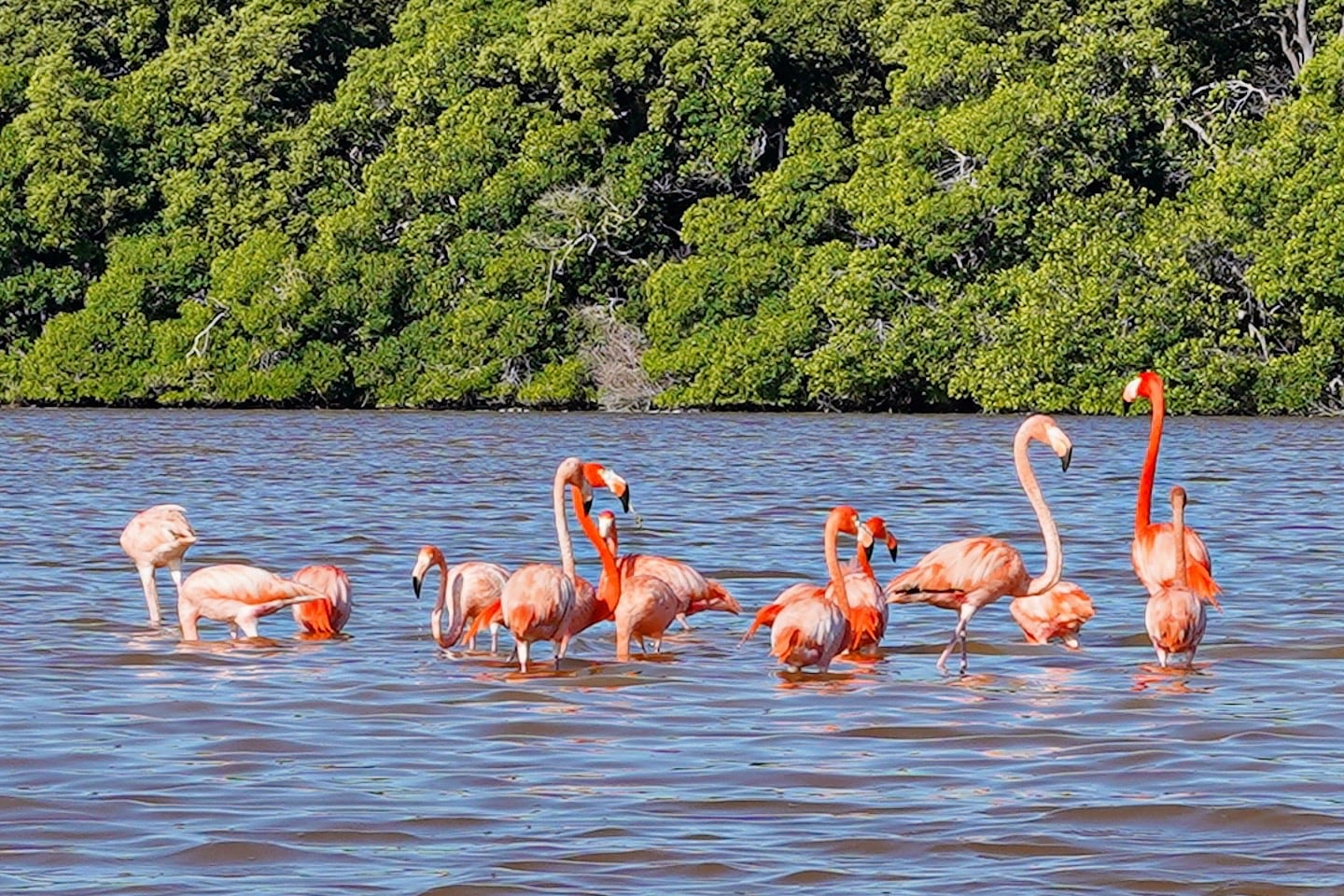
For just three months each year, pink flamingos flock to the Ria Celestun Biosphere Reserve, located just minutes away by boat from the charming beach town of Celestun.
Few places in the world offer such convenient access to viewing these gorgeously gangly birds in the wild. It was an opportunity that we couldn’t pass up while in the Merida area.
And, if you play your cards right, flamingos are just one of several native bird species you’ll encounter in and around the dense mangrove tunnels of the Ria Celestun Biosphere Reserve.
Celestun is also a great place to experience a more authentic side of Mexican life.
You won’t find all-inclusives, international chains, or the suffocating throngs of tourists here that dominate the Yucatan Peninsula’s eastern shores.
At its core, Celestun is a traditional fishing town of 10,000 residents that happens to offer a healthy amount of services and amenities for foreign and domestic tourists.
Getting to Celestun

By Private Vehicle
We’ve been traveling around Mexico by RV for the past year, so we arrived in Celestun on our own steam.
It takes about 90 minutes to drive from Merida (depending on where you’re coming from). Celestun is situated on Mexico’s Gulf Coast at the end of a narrow, yet fairly busy little highway.
If you’re arriving here by RV, keep in mind that the lanes are only about 10 feet wide with no shoulder and a vertical wall of thorny brush on either side of the road for about 40 km.
If you’re traveling by car or bus, on the other hand, it’s a fairly quick and comfortable journey once you get beyond Merida’s ring road.
Day Tour from Merida
If you don’t have your own wheels and you don’t have endless amounts of time at your disposal, your best bet is jumping on a full-day tour from Merida, of which there are several in flamingo season.
Skip down to the next section (“Which Tour(s) to Pick”) to see our recommendations for group and private tours to the Celestun flamingos from Merida.
By Bus from Merida
If you want to extend your time in Celestun, then taking a bus from Merida might be your best option. Autobuses Oriente have hourly departures from Terminal Oriente (also called Merida Noreste) in central Merida.
The trip typically takes 2.5 hours and tickets run between MX$60 to MX$160. Buses are air-conditioned and relatively comfortable, though they are a bit rougher around the edges than ADO buses, which tend to serve larger destinations.
Which Tour(s) to Pick

Most visitors staying in Celestun Town who want to see the flamingos end up hopping on one of the tour boats that leave from the beach around the main pier (Muelle). Those trips tend to be overpriced for what you get, don’t get a lot of great reviews, and don’t exactly offer the most sustainable or eco-friendly experience.
Often, boats from the pier/beach simply ferry visitors down to the mouth of the river for a view of the flamingos before bringing them back to the pier.
We didn’t want that, and we wouldn’t recommend other travelers go that route either, because there are better options available.
There are a number of tours that you can book online that receive excellent marks, but do keep in mind, these all leave from Merida.
Here are our top picks from Merida:
✪ Group Tour Full-day Celestun flamingos & mangrove boat tour
✪ Private Tour Full-day private tour of flamingos & mangroves
If you’re doing a day trip from Merida, these are great options! But we were planning to stay in Celestun for a few days, so these weren’t going to work for us, either.
For our situation, Lori researched the heck out of this one and landed on a trip with the highly-regarded, locally-owned and operated Guardianes de los Manglares de Dzinintún eco-tour operator. If you’re looking for a tour departing from Celestun, we strongly recommend going with them.
Doing a tour with Guardianes takes a bit more effort than the tour boats on the beach, as you have to either flag a mototaxi (tuk-tuk) from town or walk 20 minutes to their office, which is located on the edge of the Dzinintún mangroves. In the end, we thought it was worth the effort.
Keep reading for our full trip report.
Our Celestun Flamingos Experience
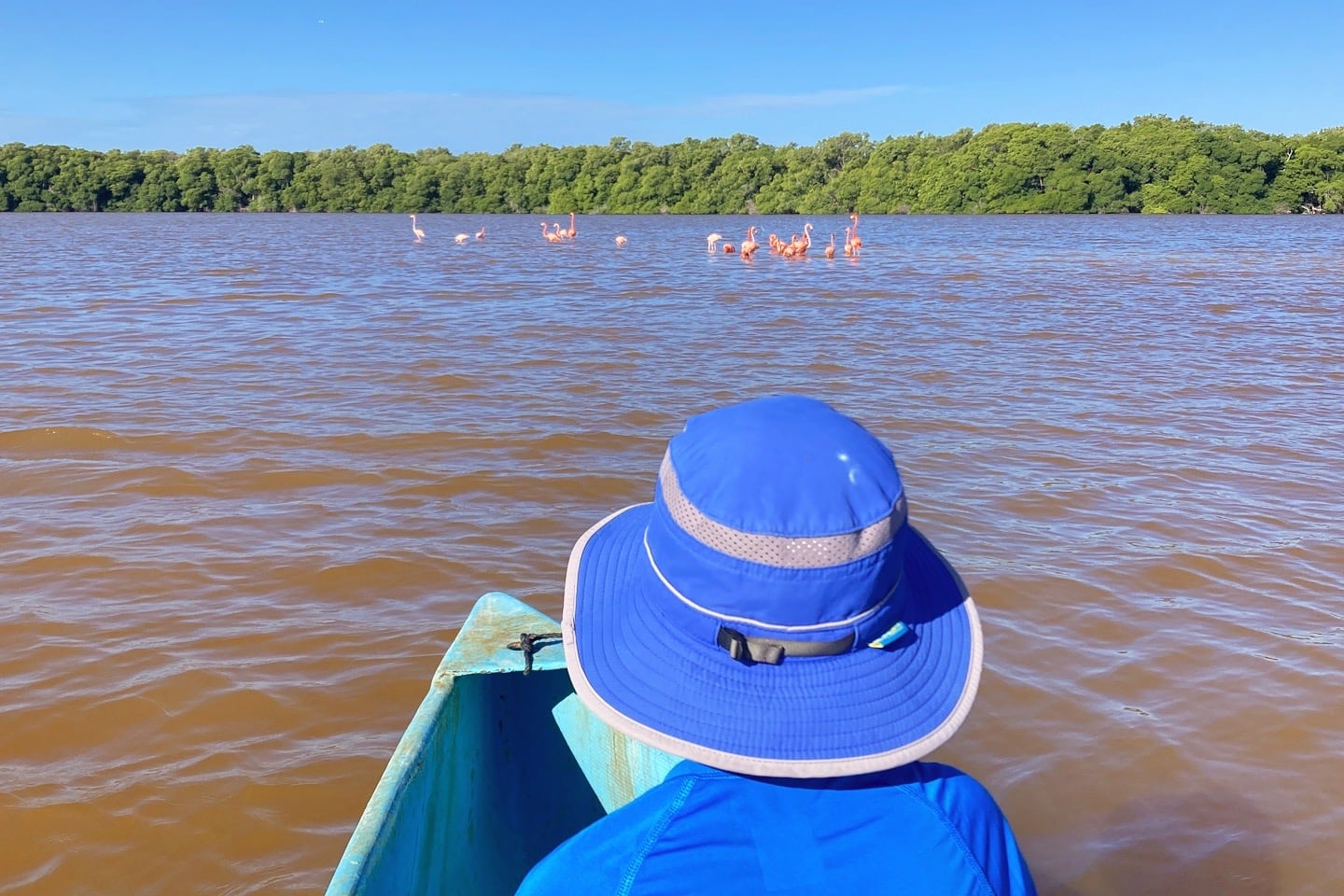
We reached out via Whatsapp (contact info is on their website, see section above) regarding current rates and tour times. We opted for the 7:30am two-hour “Clásico” boat tour with English-speaking guide.
It was a pleasant 20-minute walk from where we were staying in town to the meet-up point, which is here. We could have also flagged a moto-taxi (tuk-tuk) in town, but didn’t mind the walk.
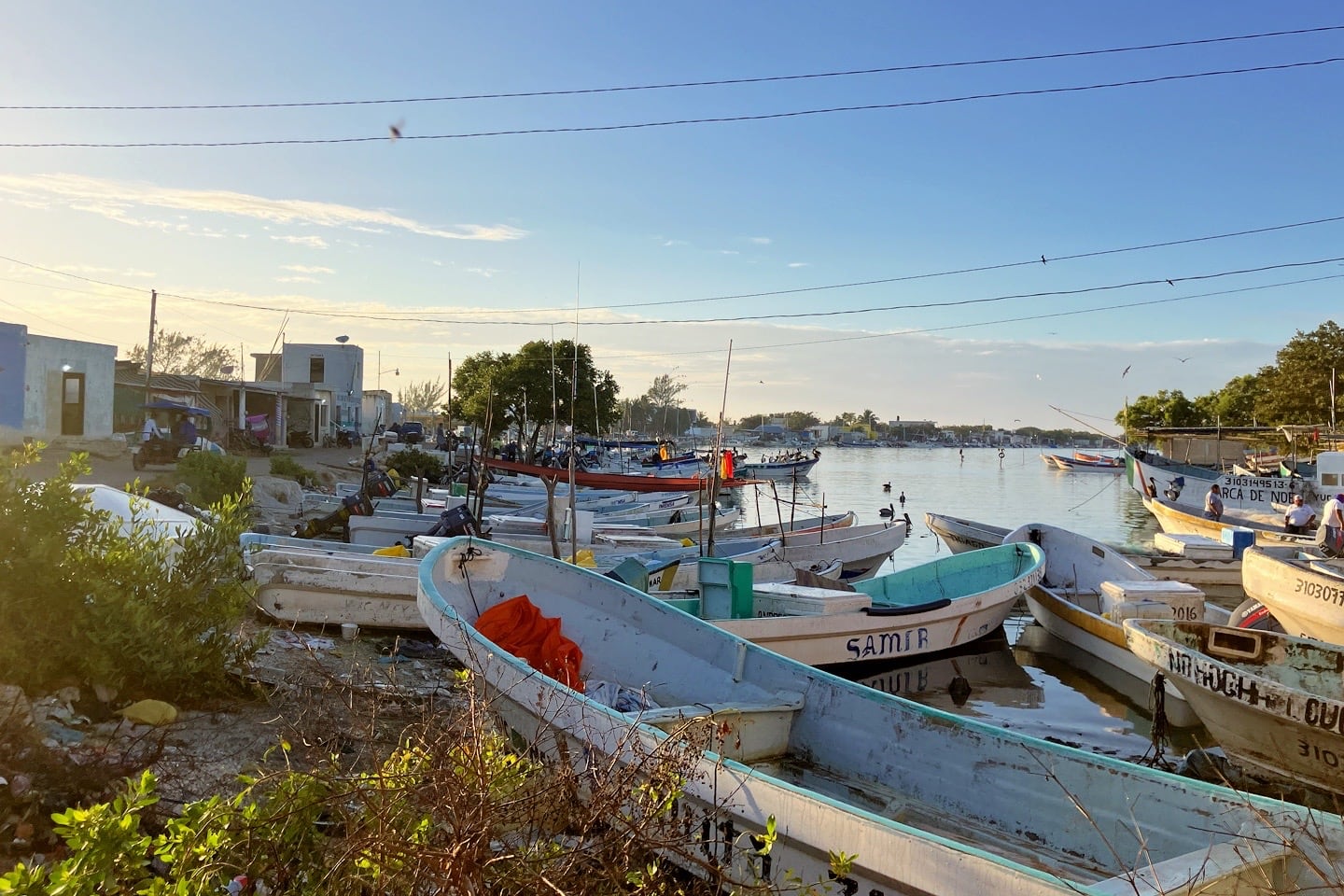
Our route took us by dozens of fishermen coming and going, and inlet upon inlet of tied-up lanchas being readied for the morning.
When we arrived, we checked in at the office, then followed our guide along a boardwalk into the dense mangrove to our boat.
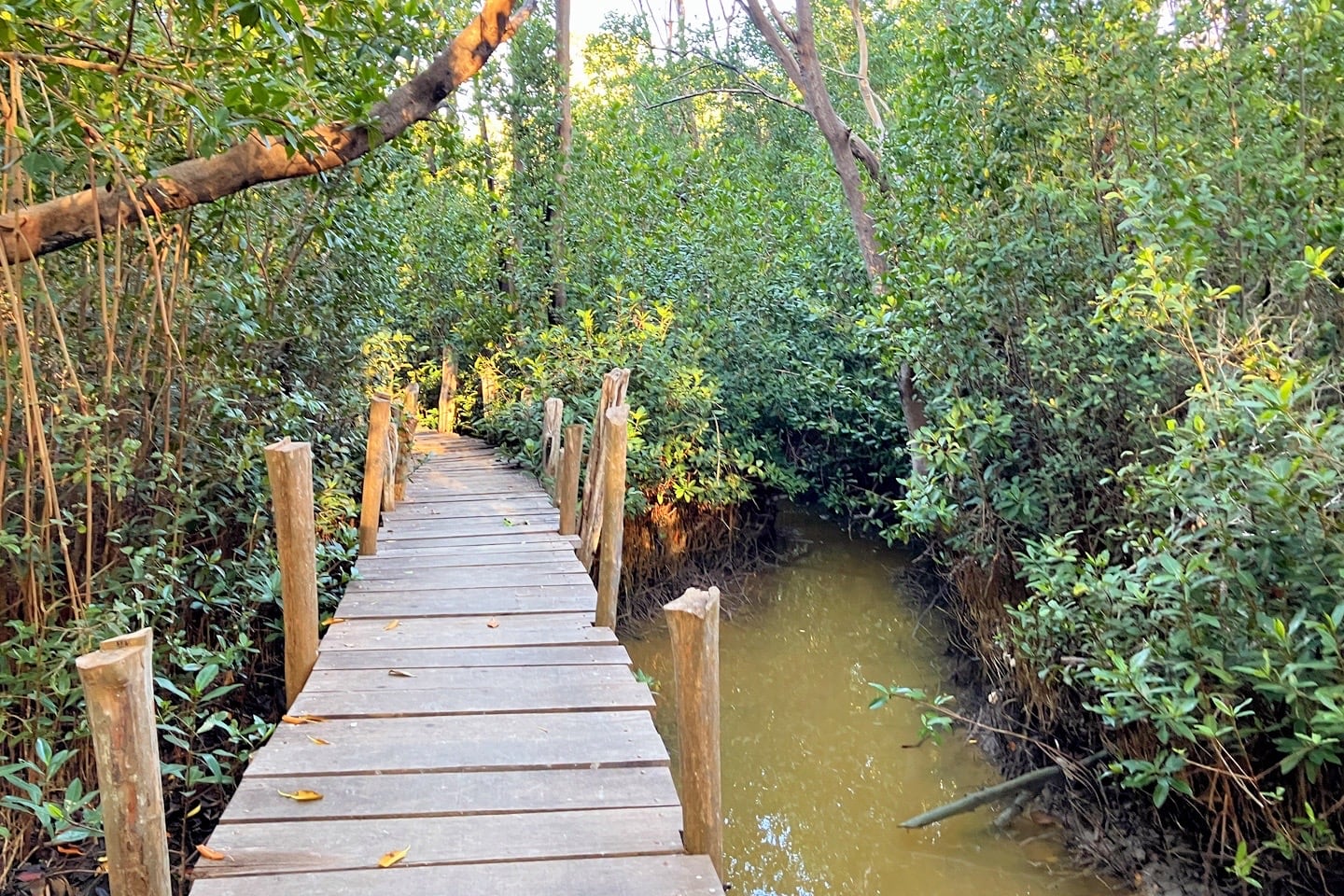
There are both canoe and motorboat options. We opted for the canoe for a better chance of seeing more wildlife (and a more mangrove-friendly option). We ended up seeing a lot more than we expected!
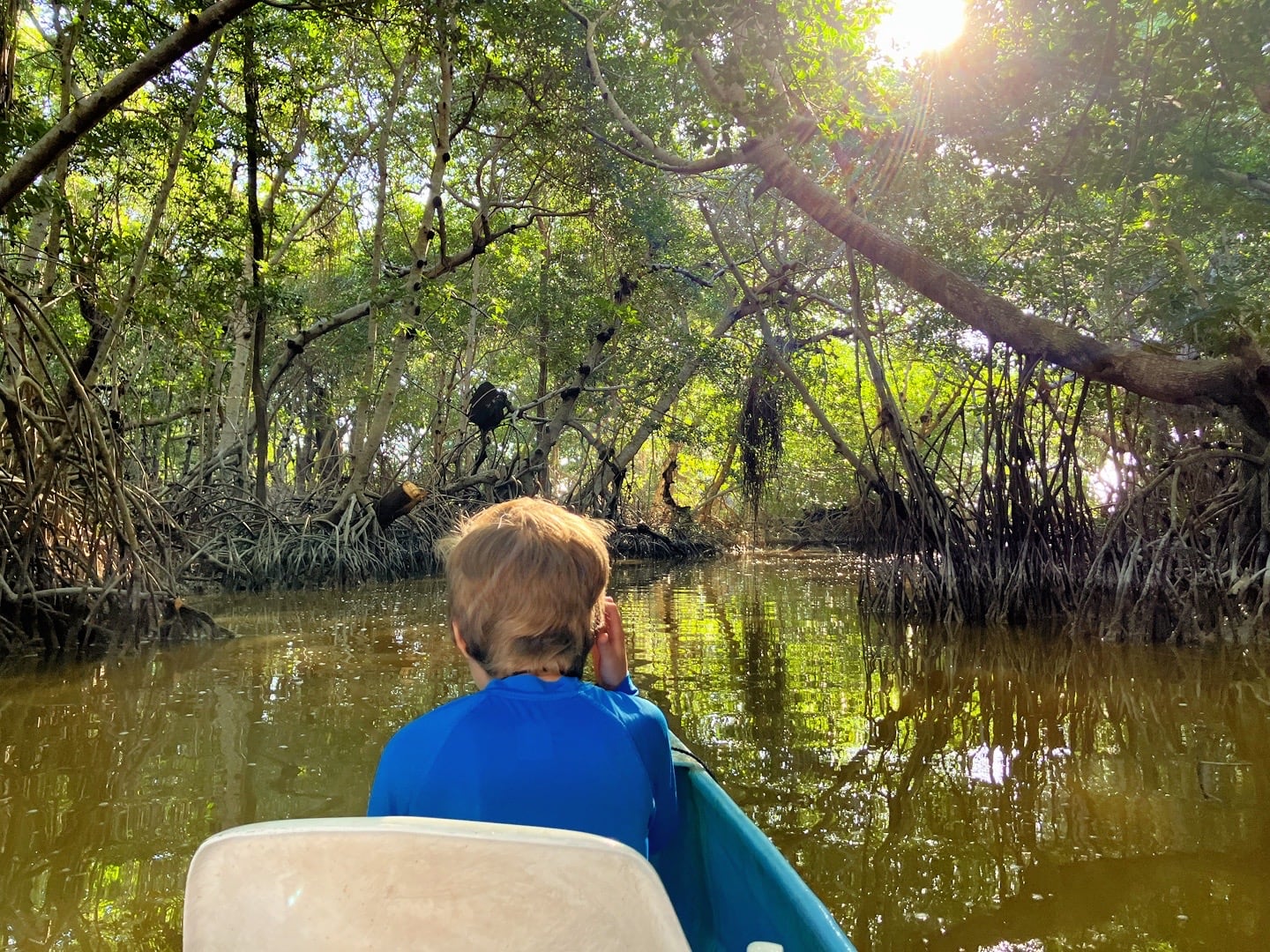
During our hour-long canoe ride through the mangroves leading to the Celestún River and flamingos, the guide pointed out a dozen different native bird species, including Green heron, Tiger heron, Boatbill heron, Red kingfisher, American Pygmy kingfisher, Black crown heron, Spotted sandpiper, Parakeet, and a rare daytime spotting of a Grey horned owl.
I no longer pack a bulky telephoto lens, so you’ll have to take my word for it. But I did manage to get a sharp, up-close shot of this guy.


We also spotted a few other jungle critters, like this sizeable Boa Constrictor in a tree above us (it’s laying across the big branch in the middle of the photo, below):
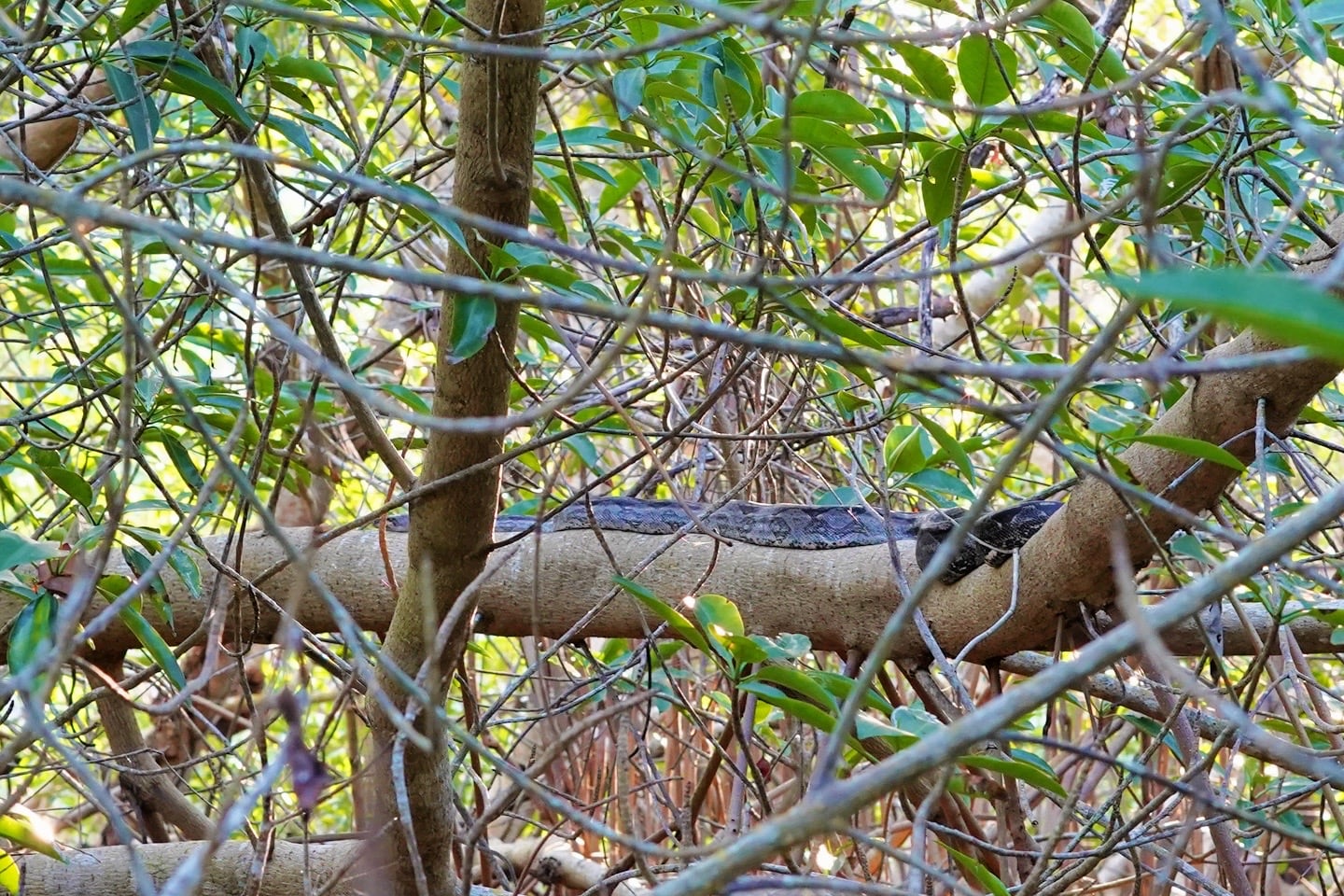
We also spotted a couple of Crocodiles (you can see the eyes of one poking out left of center, below):
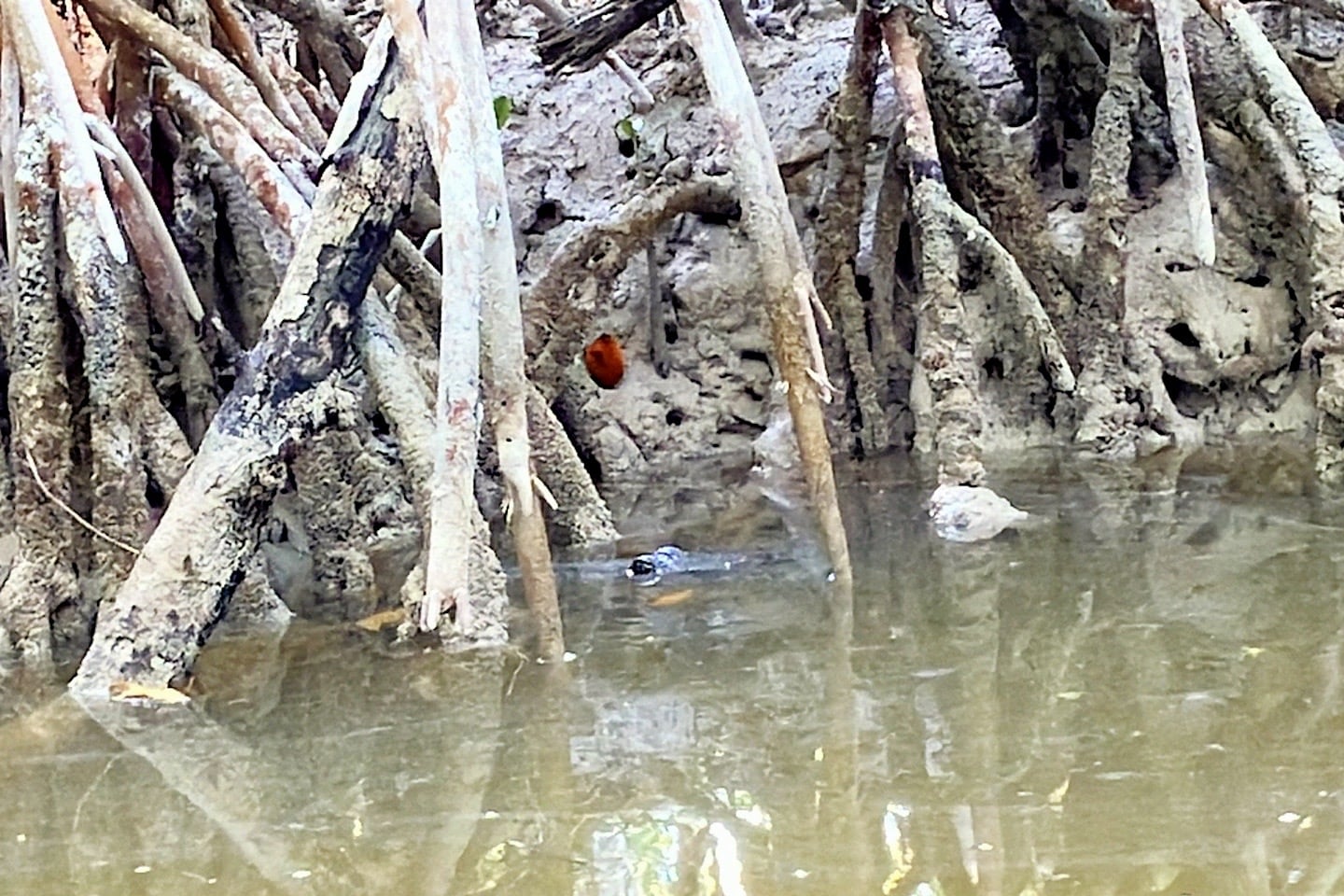
The highlight, of course, was getting to see the famous Celestun Flamingos in their natural habitat, which turned out to be pinker and more plentiful than I imagined.
Our route through the mangroves emptied out into the wide Ria Celestun, and there they were off in the distance.
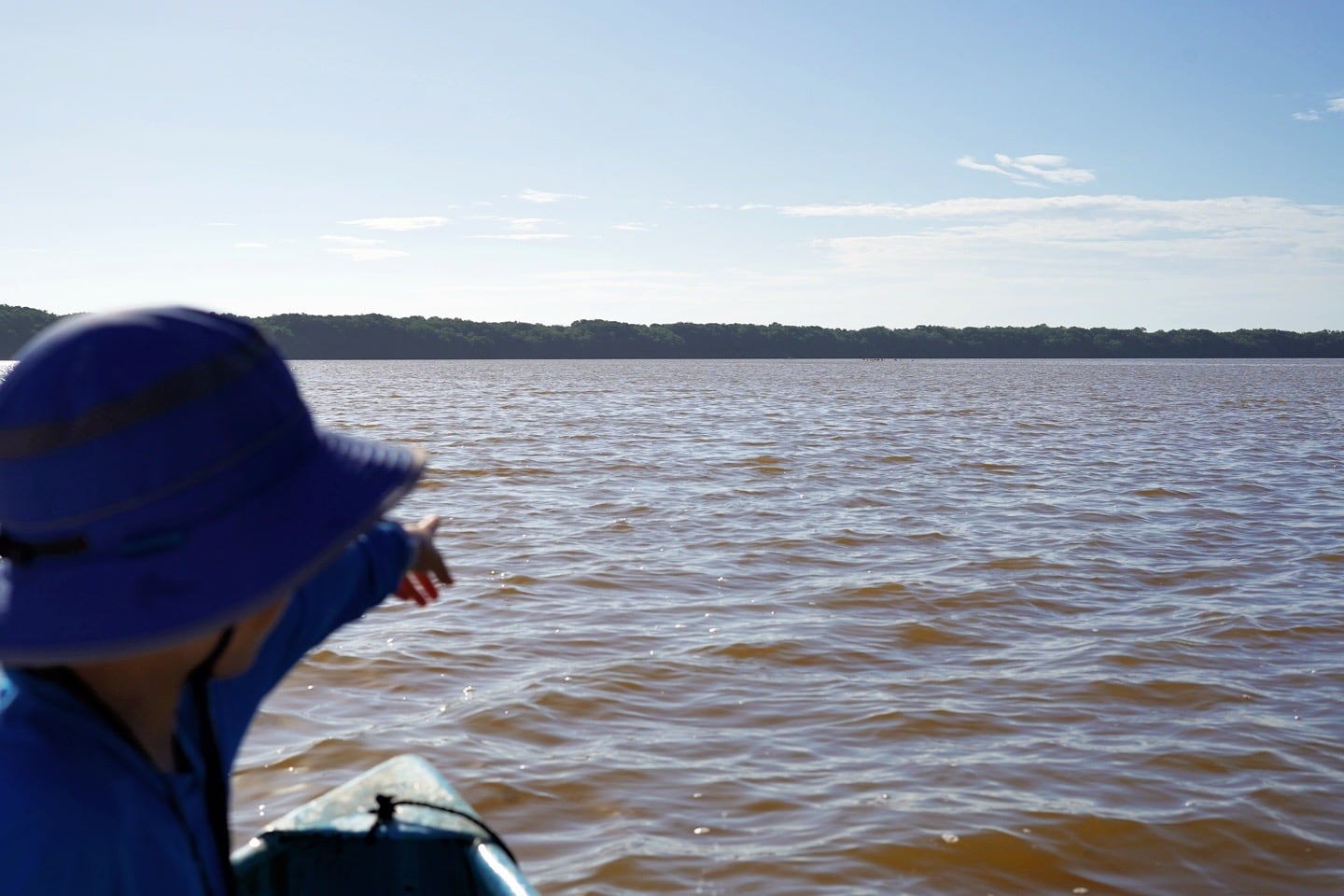
The window is relatively small for viewing the flamingos here. Our understanding is that the optimal time for seeing them is when the tide is coming in and the water is just high enough for the brine shrimp to swim but just low enough for the flamingos to stand.
When it gets too high, they fly off to other areas of the reserve, such as the Petrified Forest.

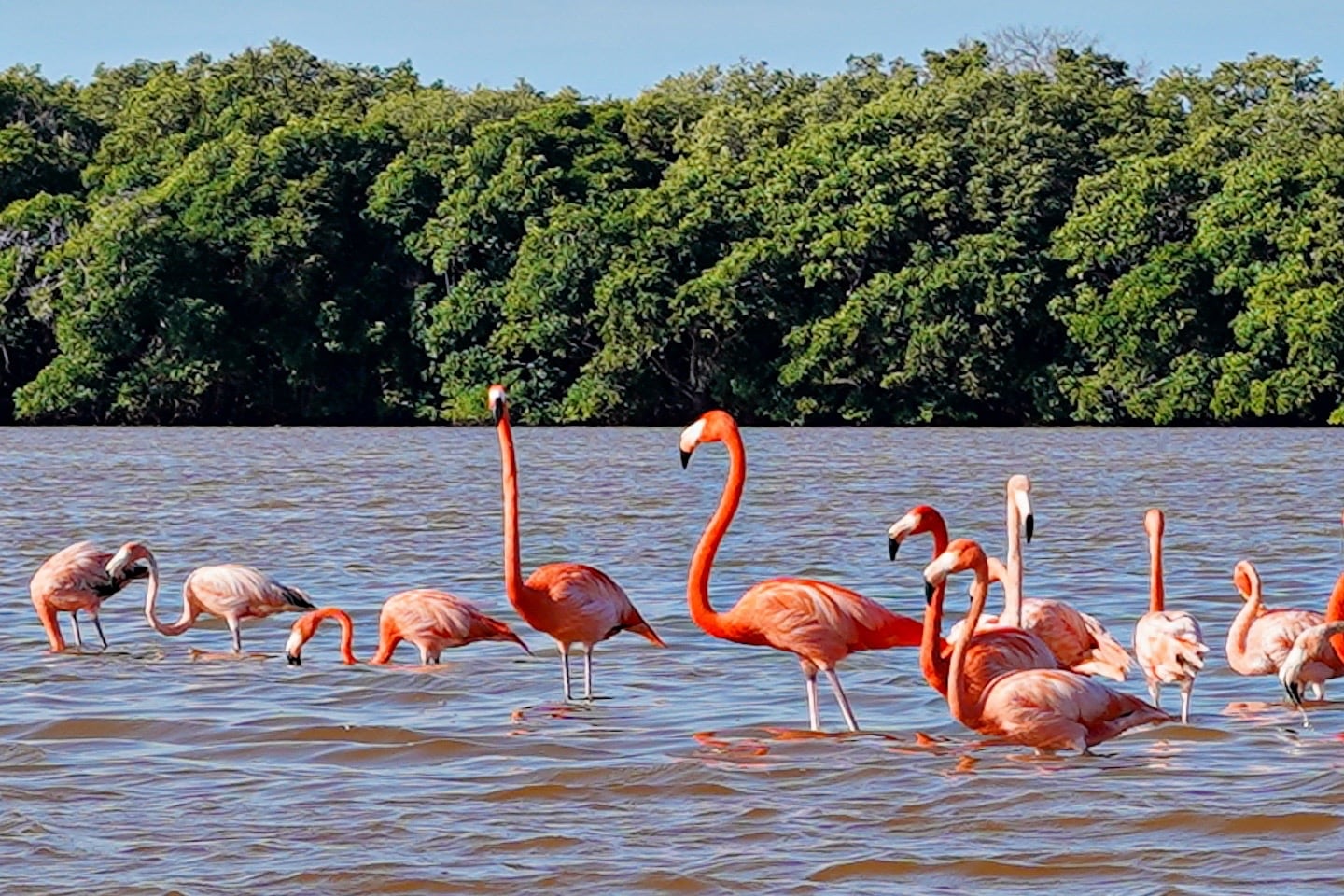
We stayed until most of the flamingos had flown the coop, then made our way to another part of the mangrove forest.
It’s worth noting that the mouth of the river here is so shallow, our guide was able to propel us the entire way with a long bamboo pole. No oars needed.
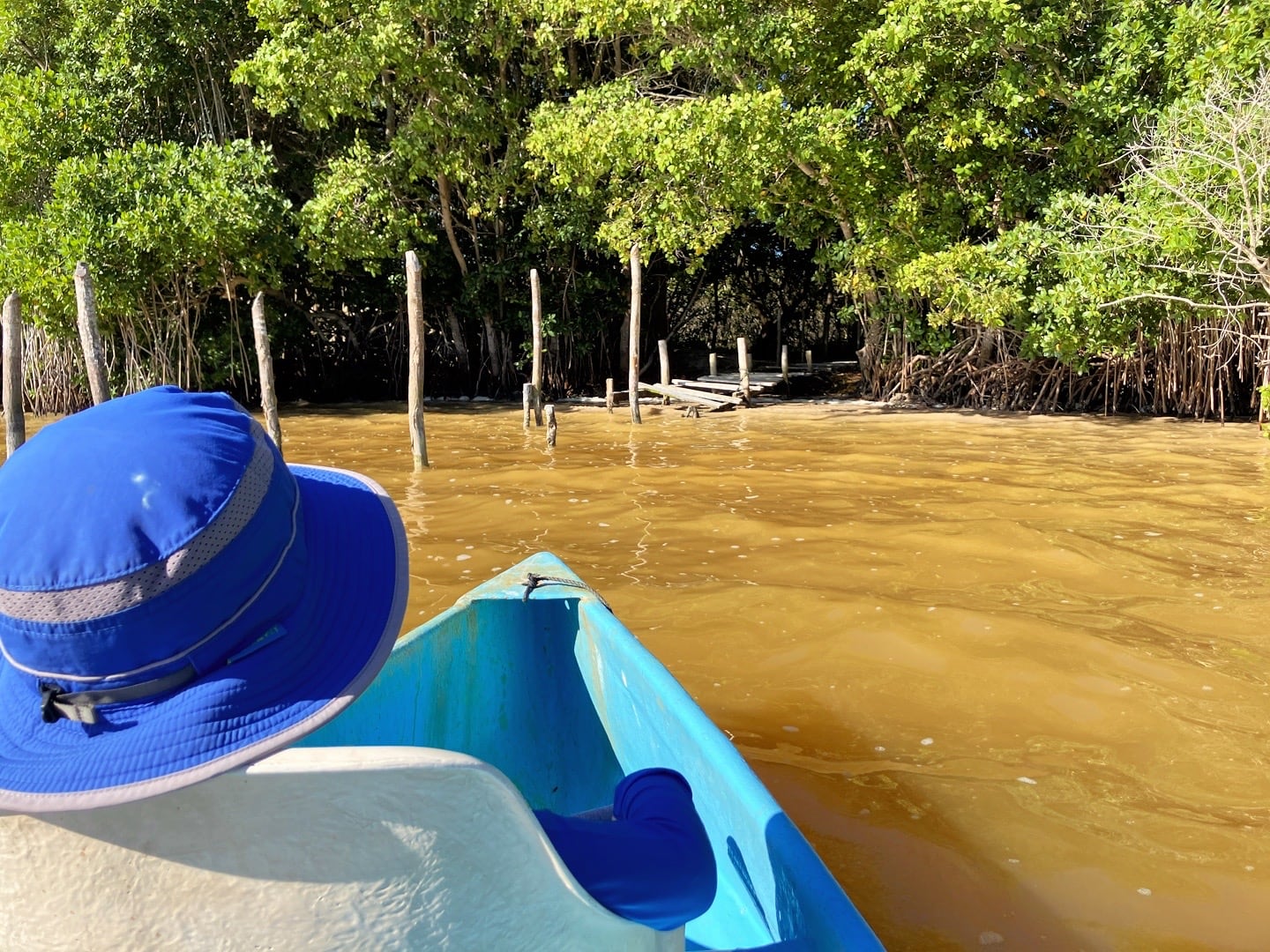
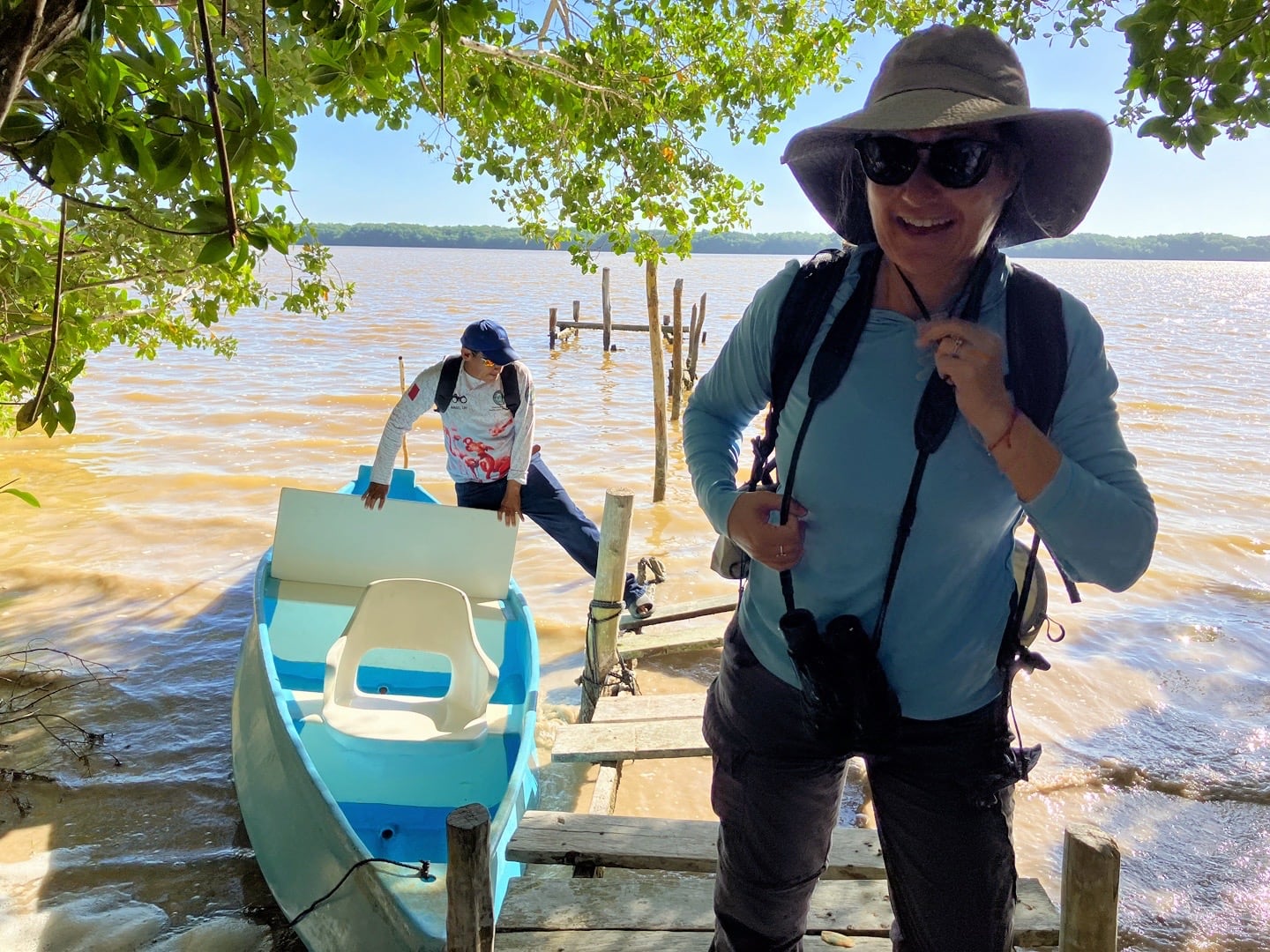

Hurricane Milton last October wreaked havoc on the Yucatan. Widespread flooding caused noticeable damage, which we’ve observed four months on in places like Holbox, Progresso, and here.
The damage, however, is nothing compared to what Hurricane Ivan did in 2004, which devastated a large portion of the reserve. Restoration efforts have been underway ever since, and today, it’s hard to notice the damage unless you know what to look for.
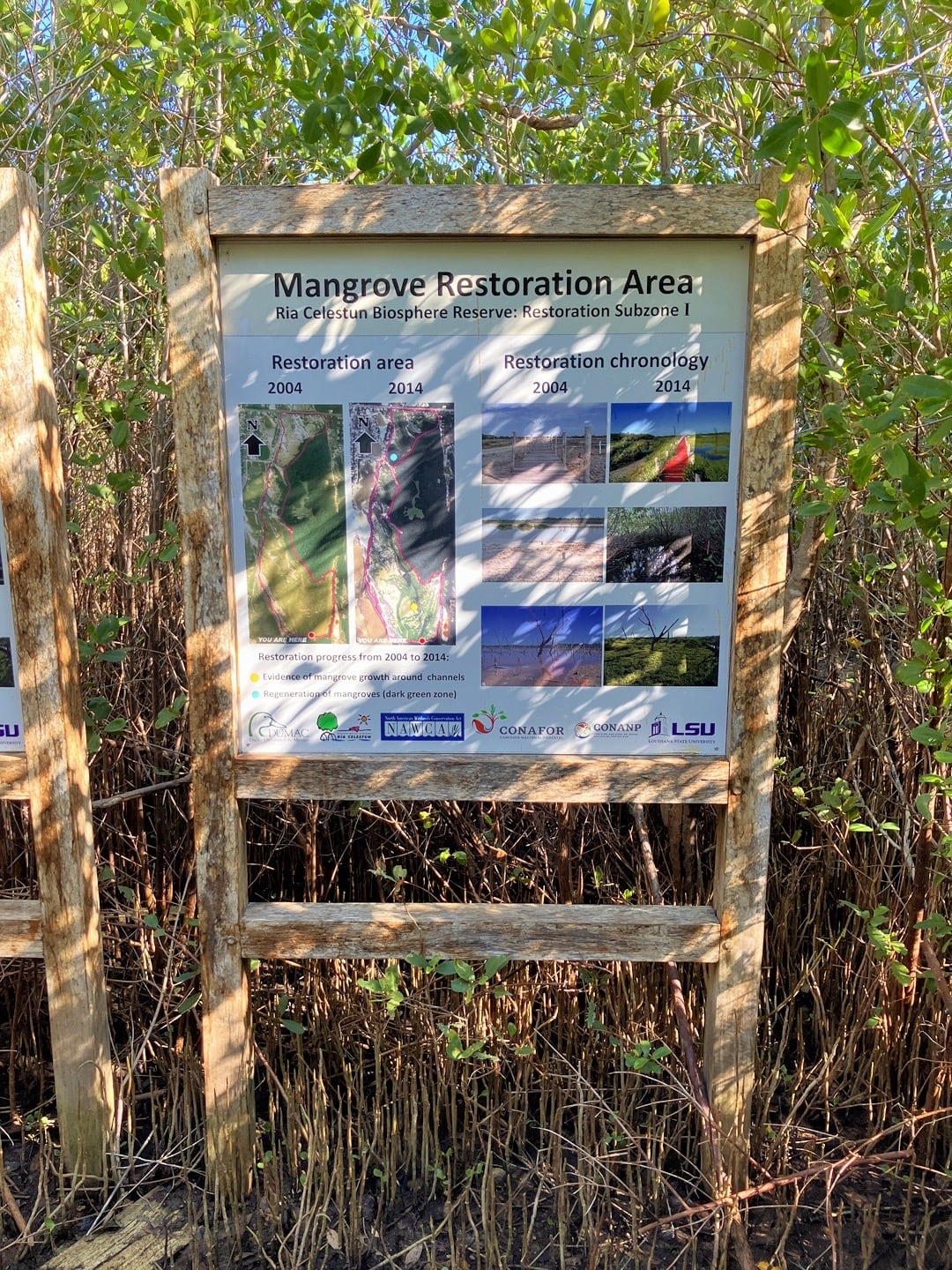
This part of the tour actually crosses into neighboring Campeche state, where the Petrified Forest is located (another casualty of a destructive storm decades back).
The Petrified Forest lagoon just happens to be a prime place to see the flamingos.
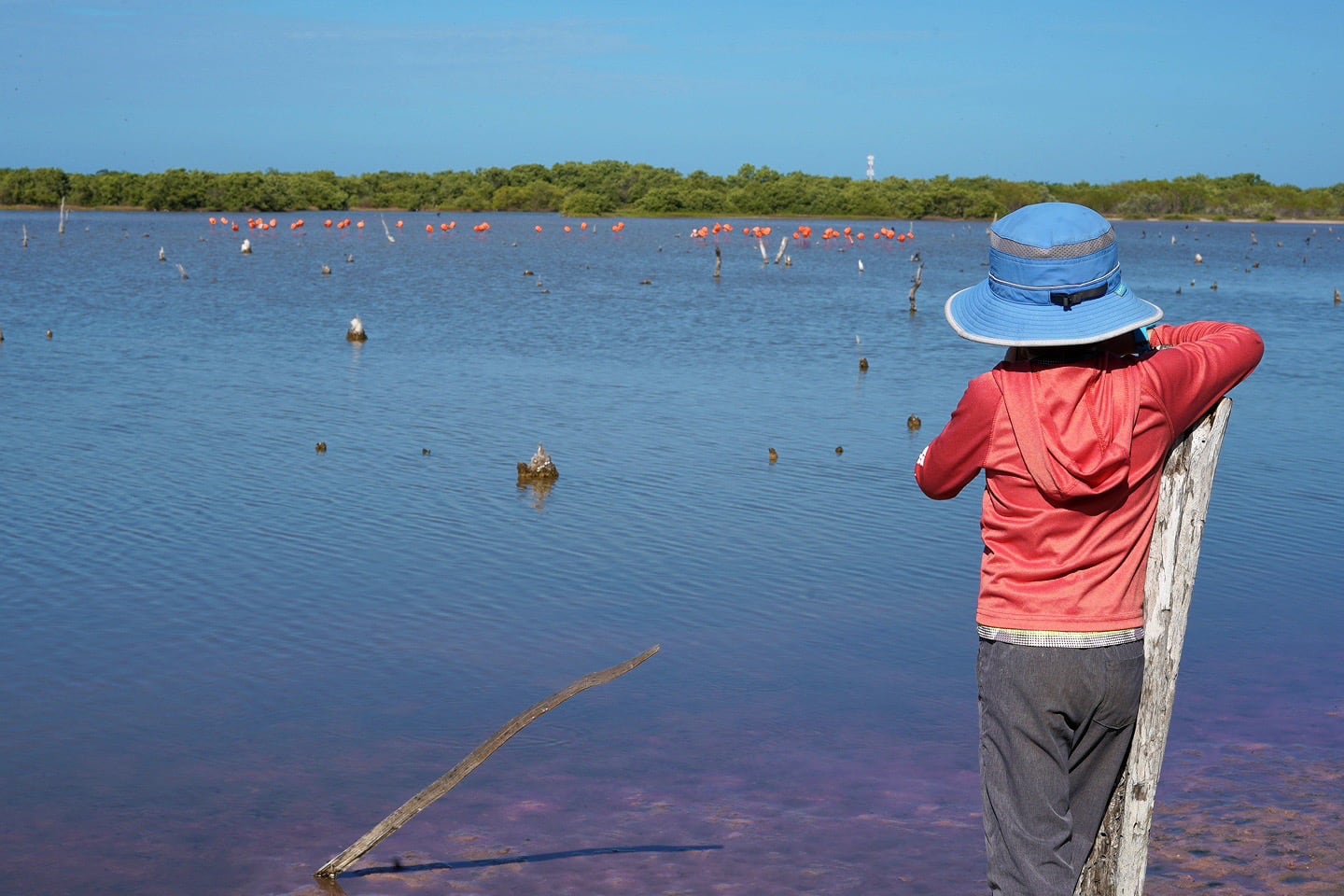
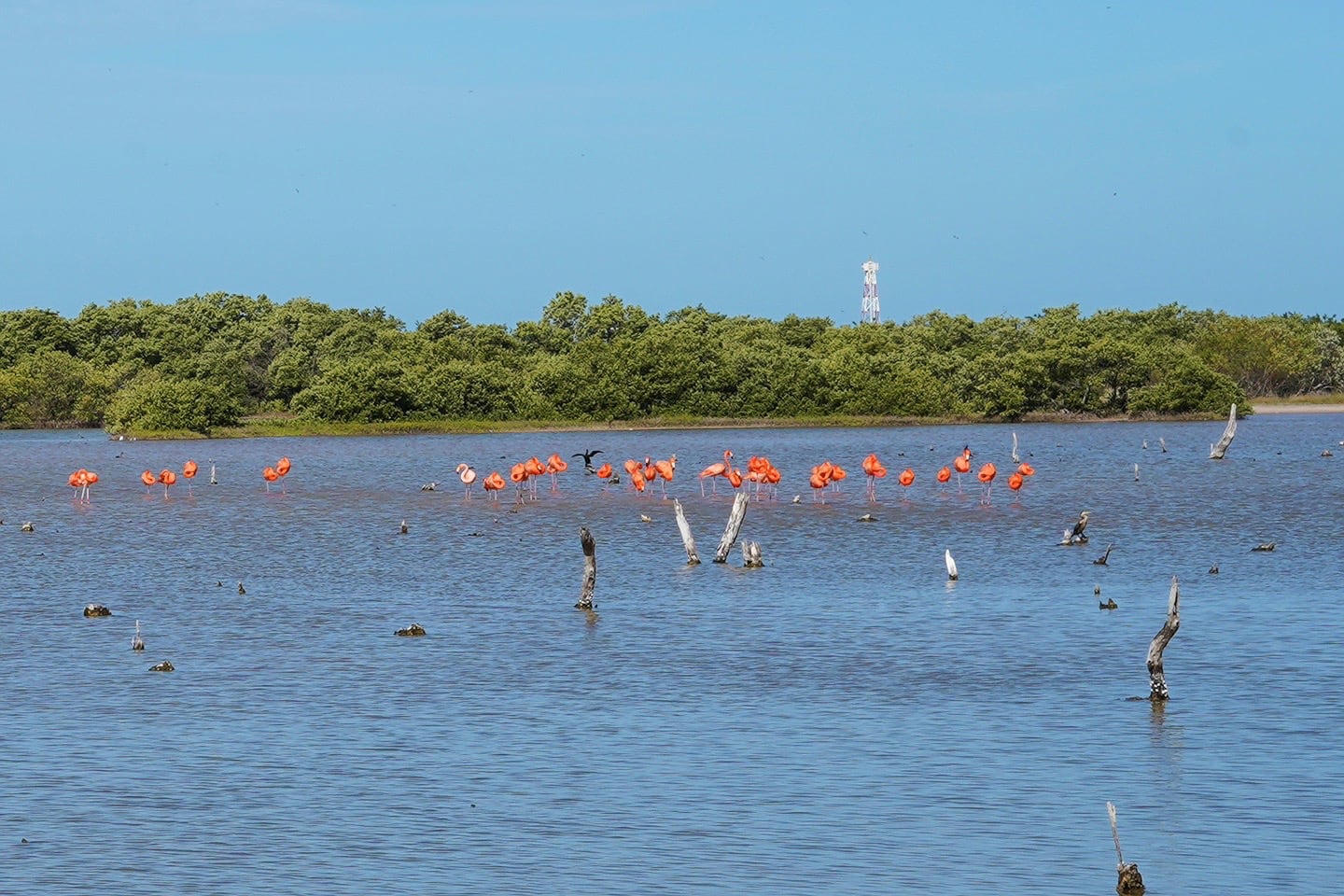
We lingered for a while here before heading to a nearby moto-taxi arranged by the tour company to shuttle us back to our starting point.

When to Visit the Celestun Flamingos
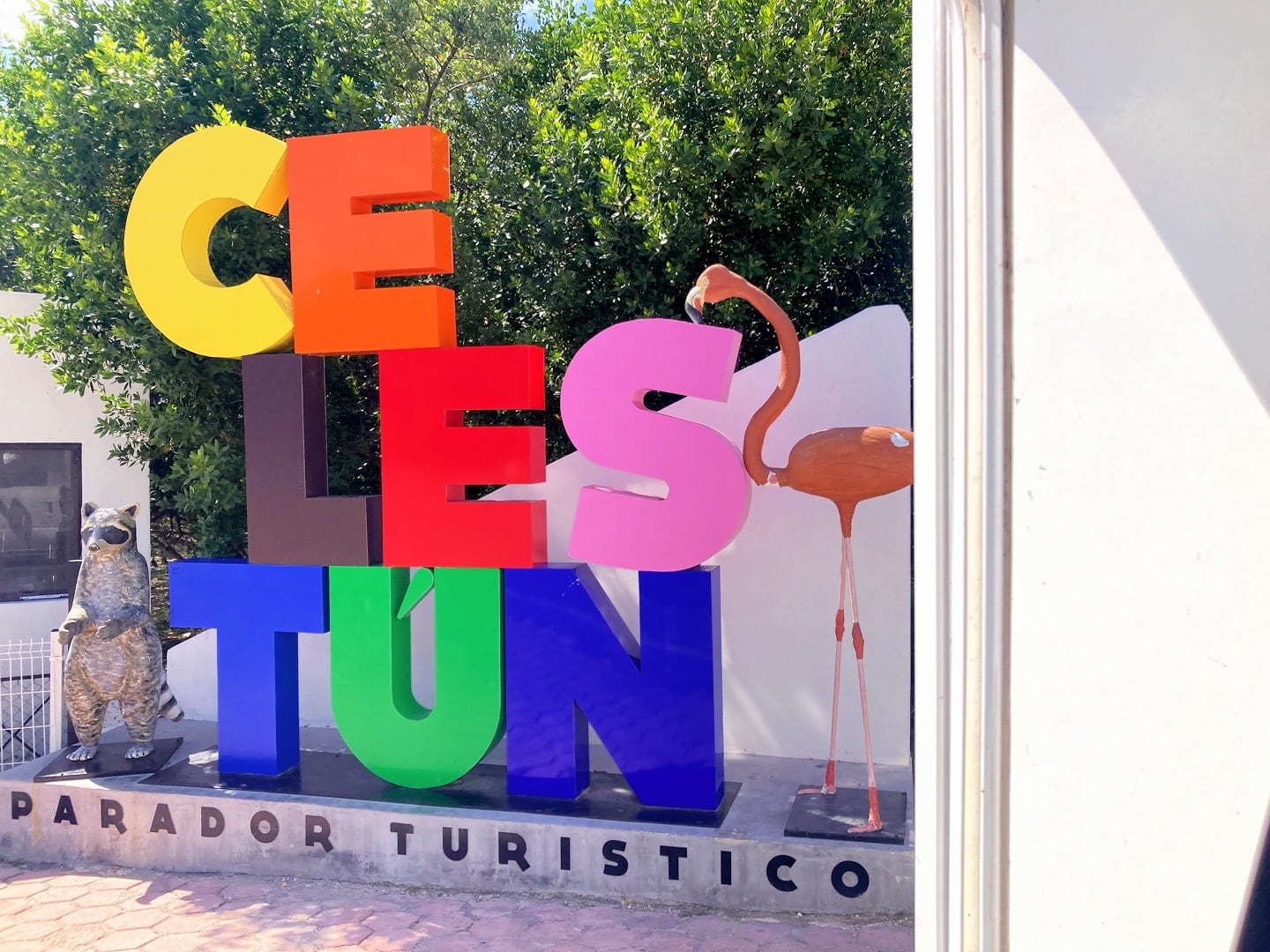
The season to see the Celestun flamingos runs from early December through February.
From a weather standpoint, this also happens to be the best time to be in the Yucatan, offering comfortable temperatures and little to no rainfall. The heat can get brutal in the Merida area any other time of year, so this is definitely a bonus.
If you happen to be in the Yucatan in the spring and summer months and still want to see flamingos in their habitat, you can! But you’ll need to head over to Ria Lagartos on the eastern side of the peninsula (north of Valladolid). The season there runs roughly from March through July each year.
Wherever you choose to see the flamingos, it pays to avoid weekends and holidays, and generally to book your trip as early in the day as possible. The optimal viewing time is dependent on the tides, and your guide or tour operator will be able to give you an idea of the best viewing window for the particular day you choose.
Final Thoughts

That does it for our guide to the pink flamingos of the Ria Celestun Biosphere Reserve. If you’re looking for a really unique experience during the winter months that’s not far from Merida (or a day’s drive from the Riviera Maya), we highly recomend a visit!
Seeing the Celestun flamingos has been a highlight of our journey around the Yucatan, and one that didn’t break the bank, which is always a bonus.
Plus, if you’re looking for a more authentic beach destination on the Yucatan Peninsula, we think that Celestun is certainly worth your consideration.
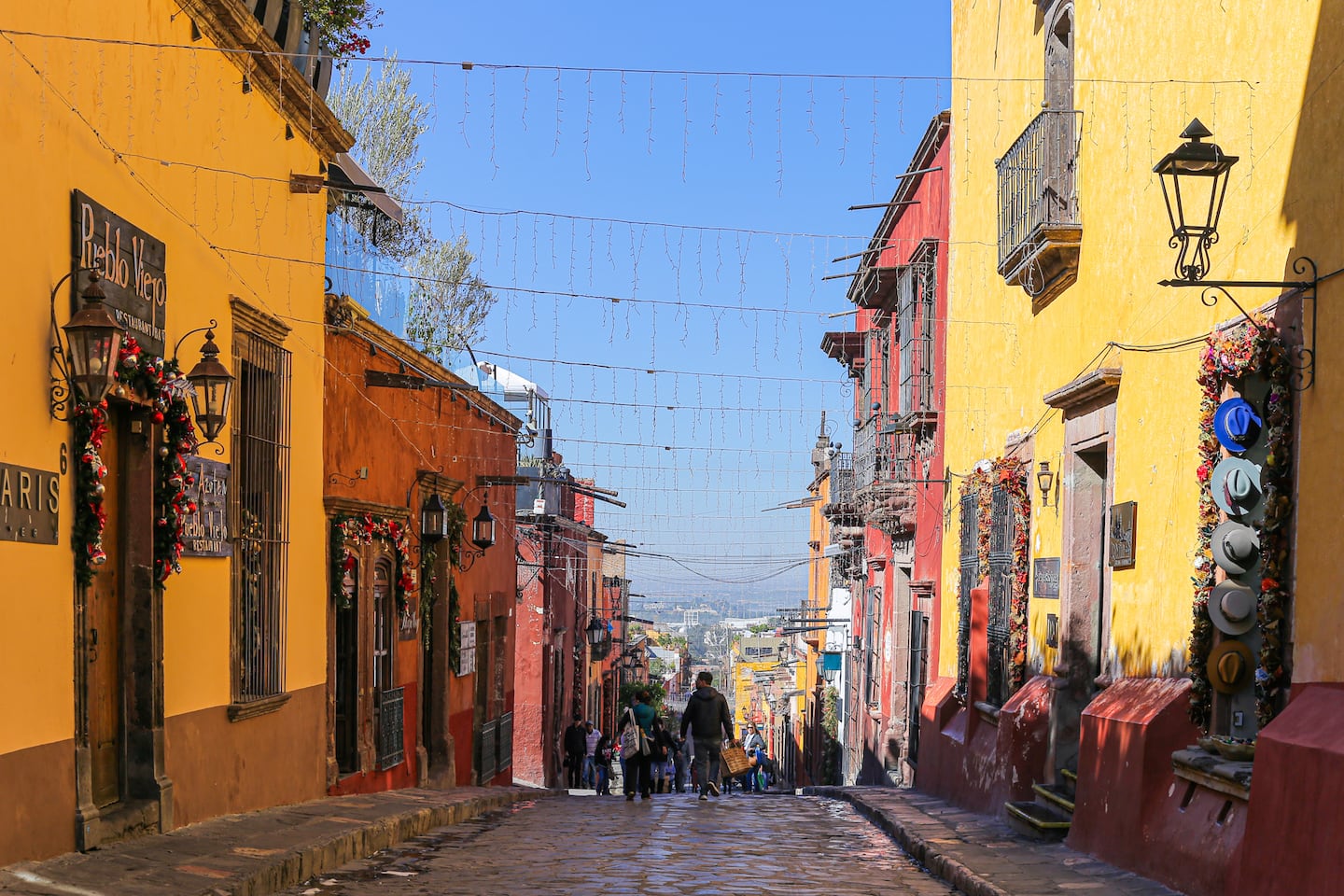
More Reading for Your Mexico Trip
The Yucatan & Caribbean
- 8 Reasons to Visit the Yellow City of Izamal
- Guide to Chichen Itza: DIY, Guided Tours, When to Go
- 12 Wonderful Reasons to Visit Puerto Morelos
- Cenote Cristalino near Playa del Carmen
Central Highlands
- Xochimilco Floating Gardens (CDMX): Visitor Guide
- Isla de Janitzio (Michoacan): What to See & How to Visit
- 6 Best Ways to Tour Teotihuacan from Mexico City
- Monte Albán (Oaxaca): Complete Guide to Visiting
Pacific Coast
- Sayulita Beaches (Nayarit): Guide to the Area’s Best
- Hiking Cerro del Mono Monkey Mountain (Sayulita)
- Playa Cuastecomates (Jalisco): Melaque Day Trip
- Yelapa (Jalisco): Why Visit & What to Expect
Baja Peninsula